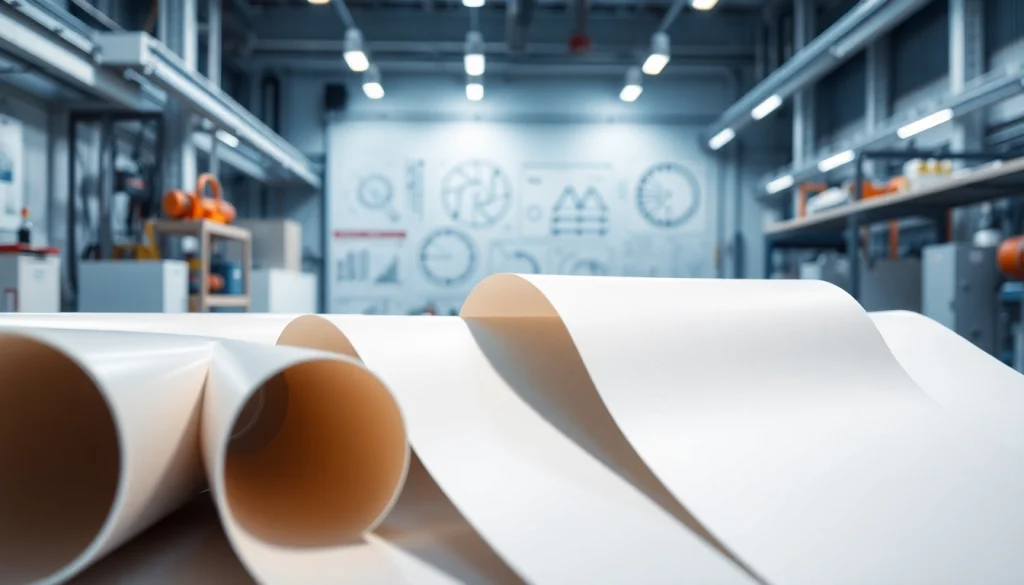Understanding Adhesive Films
What Are Adhesive Films?
Adhesive films are thin layers of adhesive material that can be applied to a variety of substrates to create a strong bond when they are activated through heat or pressure. Unlike traditional liquid adhesives, adhesive films are pre-formed, allowing for precise application and uniform thickness. This innovation in bonding technology provides numerous advantages in various industries, particularly in aerospace, automotive, and defense applications.
These films typically consist of materials like thermoplastics, epoxy, or polyurethane, which have been engineered to provide exceptional bonding characteristics along with specific properties such as flexibility, strength, or resistance to environmental factors. For detailed information on different types of adhesive films, you can visit https://www.makobond.com/adhesives-films.
Composition and Properties of Adhesive Films
The composition of adhesive films varies based on their intended use. Common materials include:
- Thermoplastics: Used for films that need to remain flexible and bond under heat.
- Epoxy resins: Known for their excellent strength and durability, making them ideal for high-performance applications.
- Polyurethane: Offers a combination of flexibility and mechanical strength, widely used in automotive applications.
Key properties of adhesive films include:
- High shear strength: They can resist sliding forces, ensuring that bonded joints hold up under stress.
- Temperature resistance: Many films can withstand extreme temperatures, making them suitable for aerospace and automotive environments.
- Environmental resistance: Resistance to moisture, UV light, and chemicals enhances the durability of the bond.
Common Manufacturing Processes
The manufacturing of adhesive films typically involves several processes, including:
- Coating: Applying an adhesive layer onto a carrier film, which can then be peeled away when ready for use.
- Curing: Exposing the coated film to heat or UV light to activate the adhesive properties.
- Die-Cutting: Precision cutting of the films into specific shapes or sizes for easy application in various manufacturing stages.
Each of these processes contributes to the overall performance and applicability of the adhesive films across various industries.
The Advantages of Using Adhesive Films
Benefits in Aerospace Applications
In the aerospace industry, the weight of components is critical for fuel efficiency and performance. Adhesive films provide an advanced bonding solution that significantly reduces the weight compared to traditional fastening methods. For instance, using adhesive films eliminates the need for heavy metal fasteners, leading to a lighter overall structure. Additionally, adhesive films offer excellent resistance to heat and environmental factors, ensuring durability even in harsh conditions.
Furthermore, adhesive films provide enhanced vibration damping properties, which is crucial for aircraft components. By absorbing vibrations, these films contribute to the longevity and reliability of aerospace assemblies.
Advantages in Automotive Industry
In the automotive sector, safety, performance, and aesthetics are paramount. Adhesive films help in reducing the weight of vehicles, thereby improving fuel efficiency without compromising structural integrity. They allow for cleaner lines on the vehicle exterior, supporting modern design trends which demand sleeker shapes without visible fasteners.
Moreover, these films are used in bonding glass to metal, which not only enhances the strength of the bond but also simplifies the manufacturing process. The quick curing time of adhesive films allows automotive parts to be assembled faster, reducing overall production times.
Impact on Defense and Security
In the defense sector, reliability and strength outweigh all other considerations. Adhesive films provide superior bonding capabilities for composite materials used in military applications. Given that military vehicles and aircraft are subjected to extreme conditions, the ability of adhesive films to maintain consistency under temperature and pressure changes is invaluable.
Furthermore, the use of adhesive films in defense applications can enhance radar performance by minimizing the weight while maintaining the structural integrity of composite materials.
Key Applications of Adhesive Films
Use in Composite Materials
Composite materials have revolutionized several industries, allowing for the creation of items that are lightweight yet incredibly strong. Adhesive films play an essential role in the manufacturing and bonding of composite materials by ensuring strong connections without adding significant weight. For example, in aerospace, composite structures can be joined seamlessly, enhancing aerodynamic efficiency.
Additionally, the uniform bonding properties of adhesive films prevent debonding issues often found with traditional methods, providing longevity and reliability to composite assemblies.
Applications in Electronics
Adhesive films are increasingly being adopted in the electronics industry for bonding components such as displays, circuits, and touch panels. The advantages include the ability to fill gaps and provide insulation while offering moisture protection. The films ensure durability while addressing thermal management, which is essential for high-performance electronics.
Utilizing adhesive films allows for the reduction of assembly time and the creation of thinner electronic devices, reflecting current trends in consumer electronics design.
Role in Construction
In construction, adhesive films are used for a variety of applications ranging from window bonds to structural reinforcements. The ability of adhesive films to provide a strong and weather-resistant bond makes them an attractive option for building materials. They minimize the need for mechanical fasteners, reducing labor costs and improving aesthetics.
The application of adhesive films in construction can also contribute to energy efficiency, as they can provide superior insulation compared to traditional materials, helping to maintain consistent temperatures within buildings.
Factors Affecting Adhesive Film Performance
Temperature Tolerance
The performance of adhesive films is significantly impacted by temperature variations. Many adhesive films are engineered to withstand extreme temperatures, but exceeding these limits can lead to failure of the bond. Understanding the operational temperatures and the specific adhesive properties is crucial for ensuring optimal performance in applications exposed to heat or cold.
Temperature cycling can also affect the adhesive’s curing time and the final bond strength, making it important to conduct thorough testing in relevant conditions before deployment.
Environmental Resistance
Adhesive films must be resistant to various environmental factors, including moisture, chemicals, and UV radiation. Each of these factors can degrade the adhesive properties over time. For applications in harsh conditions, selecting an adhesive film with high resistance to these environmental elements is crucial. Proper surface preparation before application can also enhance performance.
Adhesive Bond Integrity
The integrity of the adhesive bond is paramount for maintaining performance. Factors affecting this integrity include surface cleanliness, application method, ambient conditions during bonding, and proper curing processes. Ensuring that surfaces are free from contaminants before the application of adhesive films is essential for achieving a strong bond. Regular testing and monitoring during the use of bonded materials can help maintain performance over time.
Future Trends in Adhesive Films
Emerging Technologies
As industries continue to evolve, the demand for advanced adhesive film technologies grows. The development of 3D printing technologies has led to innovative methods for producing adhesive films that are customized for specific applications. These advancements allow for tailored adhesion properties, enhancing performance and reducing waste during production.
Smart adhesive films that respond to various stimuli such as temperature changes or pressure are also on the horizon. These films could offer adaptive bonding solutions, which would further revolutionize how bonding occurs in various applications.
Sustainable Practices in Adhesive Manufacturing
The push for sustainability is leading many manufacturers to explore eco-friendly materials for adhesive films. Biodegradable adhesives and solvent-free formulations are being researched and developed, presenting less environmental impact throughout their lifecycle. Moreover, sustainable practices in the supply chain and production processes are seeing a rise, contributing to lower carbon footprints.
The Role of Adhesive Films in Next-Generation Products
As technology advances, the role of adhesive films will only become more significant in next-generation products. Innovations in automotive, aerospace, and electronics will require adhesive technologies capable of meeting increased performance standards. The integration of adhesive films not only enhances product mechanics but also contributes toward greater design freedom, allowing for new applications that were previously not feasible.
This future landscape points towards a convergence of material science and advanced manufacturing techniques that will push the boundaries of performance, sustainability, and functionality across various industries.





